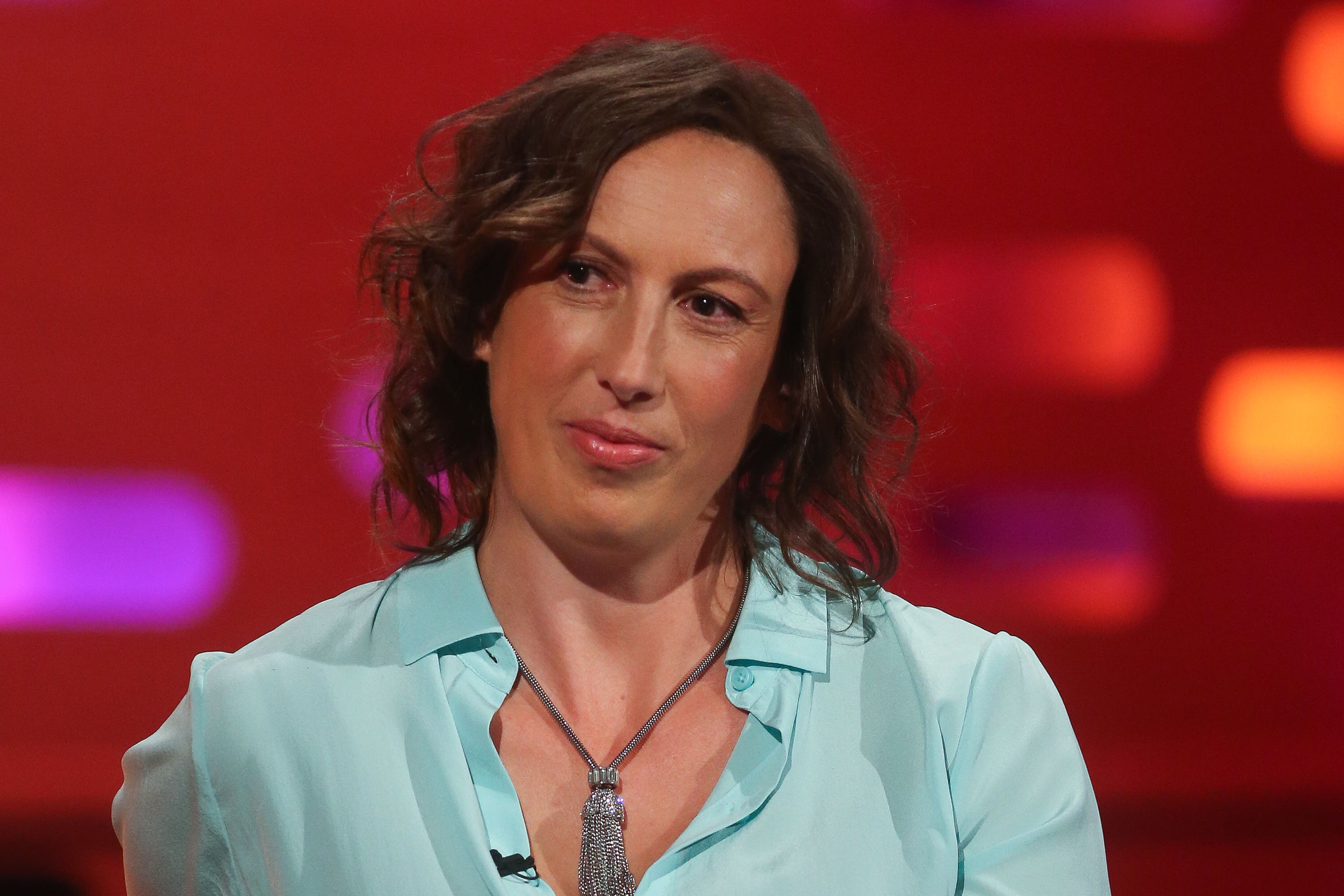Miranda Hart, Lyme disease and the doctors that don’t think it exists
As the actor reveals the real reason she has been absent for many years, Zoë Beaty looks at the fatigue-based illness that Hart is suffering from and why it is controversial for so many


In a candid interview this week, Miranda Hart described a particular type of loneliness. She has missed her life, she said, on BBC Radio 4; she’s been bed-bound and housebound with a “fatigue-based chronic illness that takes a long time to be diagnosed”. Her ordeal and subsequent vulnerability – a bedfellow of long-term sickness – left her “waiting in darkness” and with the realisation that she “didn’t want to be alone”.
After many years away, Hart has been welcomed back to the spotlight to promote the publication of her latest memoir, I Haven’t Been Entirely Honest with You. Things appear to have changed: the gangly, perennially single Miranda that 10 million lovingly watched on the BBC for five years is now married, and her signature silliness has gained a touch more sincerity. In her book, Hart is laying bare the reality of her absence, spent in the grips of a turbulent illness which often rendered her quite helpless.
She was suffering from Lyme disease, a tick-borne, bacterial infection that causes chronic fatigue, headaches, swollen joints and fever, among others. The disease, which usually (but not always) first presents as a “bullseye” rash – circle or oval-shaped markings around a tick bite – in the few weeks after being bitten, before flu-like symptoms appear.
A course of strong antibiotics prescribed in the early stages usually works. But some patients say their symptoms persist long after, often for years and years. It’s debilitating, says Hart.
It’s also controversial.
For decades even the very existence of Lyme disease has been debated, with naysayers arguing that it’s a US-born phenomenon that’s become a catch-all sticking-plaster term, used inaccurately over sprawling, vague symptoms.
Some doctors believe that patients with chronic fatigue syndrome are being misdiagnosed with Lyme, others are more direct – they say that Lyme disease is simply a lucrative racket led by private American quacks. Patients, long-term sufferers like Hart, of course, disagree.
“All anyone wants is to be heard, accepted, loved and seen… and when you’re not – particularly in a medical situation – it’s the worst,” Hart told Radio 4’s Today programme. For a long time, she says, her condition was mistaken for agoraphobia (an anxiety disorder in which a person deems their environment unsafe), and then diagnosed “under the banner of myalgic encephalomyelitis (ME)”.
She explained that she was bitten by a tick as a teenager, aged 14 or 15, which is when her symptoms started. Ongoing symptoms can vary, but “flare-ups” are largely thought to be affected by triggers like emotional stress, of which Hart has had her fair share.
Back in 2017, she wrote ardently about losing her best friend, Bella (real name Joanna Duggen), to breast cancer and secondary liver cancer. “Her death blindsided me,” she said at the time, describing the grief that ensued as “heavy and unrelenting”.

Over the years she’s also divulged her issues with depression and “acute anxiety”, wherein she’s found herself “wading through treacle”. “On bad days getting to the end of the street to post a letter was hard, such was the extreme level of fear in my body,” she wrote in Miranda’s Daily Dose of Such Fun, her last book.
Her diagnosis, 33 years after she was first bitten – the culmination of “Zoom calls with two experts who confirmed, after a delightful smorgasbord of blood tests, that I had been living with reactivated Lyme disease”, she writes in her memoir – was a “relief”. “I mean, being misunderstood and misjudged is one of the hardest things about these kinds of conditions. For sure.”
At the time of infection, two blood tests are usually able to detect Lyme disease by identifying the antibodies fighting it off. However, the NHS warns that these tests can be unreliable in the early stages. National Institute for Health and Care Excellence (NICE) guidelines say that anyone presenting with the rash can be treated with up to two rounds of antibiotics, but there’s currently no medical guidance for treating the long-term “chronic” side of the illness.
Usually it’s treated similarly to ME or chronic fatigue syndrome, fibromyalgia – with “energy management”, lifestyle changes and cognitive behavioural therapy.

According to some studies, an estimated 14.5 per cent of the world’s population have had Lyme disease and researchers believe that it has become more common due to a warming climate which has enabled ticks to spread to new regions, increasing the opportunity for them to pass on pathogens.
In more recent years, it’s also gained celebrity status as the likes of Bella Hadid, Justin Bieber, Shania Twain and Avril Lavigne speak out about their experiences; as a result, huge online communities have become prolific on social media.
According to a BMC study, patients with Lyme disease are more likely to be white, female and living in affluent areas. The research found that “nearly two-thirds of patients were women or girls and, for patients whose ethnicity was recorded, 96 per cent were white”.
Yet, many health authorities do not recognise chronic Lyme disease as a condition in its own right. One paper found that around 5 per cent of patients experience long-lasting fatigue, pain and muscle aches after a course of antibiotics, known as “post-treatment Lyme disease” (PTLD) – a term that is rejected by large parts of the Lyme community for its connotations that the illness has passed. Rather, they argue, a person can have recurrent, consistent re-infection.

This is where the controversial part comes into play. Increasingly, the standard treatment for Lyme disease in the US is long-term use of antibiotics, with some people taking the drugs for years on end.
The practice of overusing antibiotics is considered notoriously harmful – antibiotic resistance puts millions at risk each year by changing bacteria so much that antibiotics don’t work against them.
The practice is so contentious that, both in the US and the UK, patients seeking long-term antibiotics – which are only available through private practice and not sanctioned by the NHS – are often forced to sign non-disclosure agreements with their doctor in order to obtain a prescription.
Doctors prescribing are risking their licences to treat it, says Natasha Metcalf, founder and co-chair of volunteer-led charity Lyme Disease UK. Many, like her, travel from the UK to the US to find treatment.
There’s a question of whether it exists, and we don’t actually have a test for cure – it’s not one of those illnesses where you can test to see if it’s gone away. So we’re kind of at the stalemate
“I was labelled with ME and fibromyalgia,” Metcalf says. Like Hart, she was bitten by a tick as a teenager and continued to suffer symptoms periodically throughout her twenties. Her symptoms included fatigue, headaches – but the symptoms are “constantly on the move”, she explains.
“So you feel like a real hypochondriac. One day your knee hurts, then it’s your shoulders… One of the worst things for me was my brain – I couldn’t remember my birth date or fill out a basic form.”
Metcalf also claims to have been diagnosed with bipolar and schizophrenia during her search for a Lyme disease diagnosis, despite never having symptoms of mania or loss of reality.
Until she went to the US, she was “having seizures; I was really, really sick,” she explains. “I was also showing symptoms of various co-infections that are all tick-borne, so you’re not even limited to Lyme disease with what that tick is carrying. It’s obviously frowned upon, but it wasn’t until I got long-term antibiotics that I got better. It saved my life.”
Metcalf’s symptoms rendered her unable to function. Like Hart, who said there would “be times where I’d look at a glass of water and think, I don’t know how to pick that up”, Metcalf “basically spent 12 years in a darkened bedroom”, unable to work.

Now aged 40, and on a “programme” of antibiotics, which she takes a combination of for a certain amount of days per month, she’s back to working full-time, and running a charity in her spare time.
The trouble is, she explains, despite the reported high numbers of people who may have the disease, there’s a grave lack of research into the condition, perhaps due to the decades that the condition has been downplayed by the medical community.
“There’s a question of whether it exists,” Metcalf says, “and we don’t actually have a test for cure – it’s not one of those illnesses where you can test to see if it’s gone away. So we’re kind of at the stalemate where people will say, ‘well there’s no proof it exists’, but there’s also no proof it resolves itself. If the immune system is compromised, the chances are it’s not just going to.
“There’s kind of a denial about it, which is very difficult. This is why more research is desperately needed, because right now we can only share our experiences – that thousands and thousands of people around the world who had a tick bite got sick.”
Since the emergence of long Covid, research in the area is picking up – in the US, at-home tests, urine tests and better antibody tests are all being investigated – just very slowly. In the meantime, for Metcalf, raising awareness of the disease is a priority, which is why she’s glad to see that Miranda Hart has been vocal about her ailments. The key, she says, is to get treatment early. “But in a case like Miranda’s and mine, where it’s left for decades, that’s where it gets complicated.”
Hart’s admission of her battle appears to be similar. Back in 2021, when the scale of long Covid was slowly revealing itself, Hart tweeted her empathy for those suffering “housebound chronic illnesses”.
“I hope the pandemic has raised some awareness of what it is like living with an illness that keeps you in lockdown for years,” she said, “and the ensuing isolation, difficulty in being understood, grief and much more. Much love to all.”
Perhaps now, years on, her message will shed a bit more light on a disease that takes the spotlight but remains somewhat of a mystery.




Join our commenting forum
Join thought-provoking conversations, follow other Independent readers and see their replies
0Comments